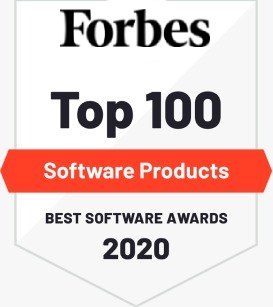Section 1 : Introduction to the Course
|
|
Lecture 1 | INTRODUCTION TO BRAINMEASURES PROCTOR SYSTEM | |
|
|
Lecture 2 | What is Data Science | 00:03:56 Duration |
|
|
Lecture 3 | ML Data Science Syllabus | |
|
|
Lecture 4 | Top Tips for Succeeding on this Course | |
|
|
Lecture 5 | Course Resources List |
Section 2 : Predict Movie Box Office Revenue with Linear Regression
|
|
Lecture 1 | Introduction to Linear Regression & Specifying the Problem | 00:05:25 Duration |
|
|
Lecture 2 | Gather & Clean the Data | 00:09:10 Duration |
|
|
Lecture 3 | Explore & Visualise the Data with Python | 00:22:09 Duration |
|
|
Lecture 4 | The Intuition behind the Linear Regression Model | 00:07:04 Duration |
|
|
Lecture 5 | Analyse and Evaluate the Results | 00:15:32 Duration |
|
|
Lecture 6 | Download the Complete Notebook Here | |
|
|
Lecture 7 | Join the Student Community | |
|
|
Lecture 8 | Any Feedback on this Section |
Section 3 : Python Programming for Data Science and Machine Learning
Section 4 : Introduction to Optimisation and the Gradient Descent Algorithm
Section 5 : Predict House Prices with Multivariable Linear Regression
Section 6 : Pre-Process Text Data for a Naive Bayes Classifier to Filter Spam
Section 7 : Train a Naive Bayes Classifier to Create a Spam Filter Part 2
|
|
Lecture 1 | Setting up the Notebook and Understanding Delimiters in a Dataset | 00:09:49 Duration |
|
|
Lecture 2 | Create a Full Matrix | 00:17:51 Duration |
|
|
Lecture 3 | Count the Tokens to Train the Naive Bayes Model | 00:15:02 Duration |
|
|
Lecture 4 | Sum the Tokens across the Spam and Ham Subsets | 00:07:38 Duration |
|
|
Lecture 5 | Calculate the Token Probabilities and Save the Trained Model | 00:08:04 Duration |
|
|
Lecture 6 | Coding Challenge Prepare the Test Data | |
|
|
Lecture 7 | Download the Complete Notebook Here | |
|
|
Lecture 8 | Any Feedback on this Section |
Section 8 : Test and Evaluate a Naive Bayes Classifier Part 3
|
|
Lecture 1 | Set up the Testing Notebook | 00:03:54 Duration |
|
|
Lecture 2 | Joint Conditional Probability (Part 1) Dot Product | 00:11:01 Duration |
|
|
Lecture 3 | Joint Conditional Probablity (Part 2) Priors | 00:09:40 Duration |
|
|
Lecture 4 | Making Predictions Comparing Joint Probabilities | 00:07:47 Duration |
|
|
Lecture 5 | The Accuracy Metric | 00:06:31 Duration |
|
|
Lecture 6 | Visualising the Decision Boundary | 00:30:54 Duration |
|
|
Lecture 7 | False Positive vs False Negatives | 00:10:44 Duration |
|
|
Lecture 8 | The Recall Metric | 00:05:28 Duration |
|
|
Lecture 9 | The Precision Metric | 00:07:50 Duration |
|
|
Lecture 10 | The F-score or F1 Metric | 00:04:29 Duration |
|
|
Lecture 11 | A Naive Bayes Implementation using SciKit Learn | 00:29:10 Duration |
|
|
Lecture 12 | Download the Complete Notebook Here | |
|
|
Lecture 13 | Any Feedback on this Section |
Section 9 : Introduction to Neural Networks and How to Use Pre-Trained Models
|
|
Lecture 1 | The Human Brain and the Inspiration for Artificial Neural Networks | 00:07:36 Duration |
|
|
Lecture 2 | Layers, Feature Generation and Learning | 00:20:35 Duration |
|
|
Lecture 3 | Costs and Disadvantages of Neural Networks | 00:13:32 Duration |
|
|
Lecture 4 | Preprocessing Image Data and How RGB Works | |
|
|
Lecture 5 | Importing Keras Models and the Tensorflow Graph | 00:09:05 Duration |
|
|
Lecture 6 | Making Predictions using InceptionResNet | 00:16:16 Duration |
|
|
Lecture 7 | Coding Challenge Solution Using other Keras Models | 00:11:28 Duration |
|
|
Lecture 8 | Download the Complete Notebook Here | |
|
|
Lecture 9 | Any Feedback on this Section |
Section 10 : Build an Artificial Neural Network to Recognise Images using Keras
Section 11 : Use Tensorflow to Classify Handwritten Digits
Section 12 : Serving a Tensorflow Model through a Website
|
|
Lecture 1 | What you'll make | 00:06:42 Duration |
|
|
Lecture 2 | Saving Tensorflow Models | 00:15:09 Duration |
|
|
Lecture 3 | Loading a SavedModel | 00:18:25 Duration |
|
|
Lecture 4 | Converting a Model to Tensorflow | 00:14:31 Duration |
|
|
Lecture 5 | Introducing the Website Project and Tooling | |
|
|
Lecture 6 | HTML and CSS Styling | 00:29:18 Duration |
|
|
Lecture 7 | Loading a Tensorflow | 00:29:29 Duration |
|
|
Lecture 8 | Adding a Favicon | 00:05:34 Duration |
|
|
Lecture 9 | Styling an HTML Canvas | 00:32:19 Duration |
|
|
Lecture 10 | Drawing on an HTML Canvas | 00:28:24 Duration |
|
|
Lecture 11 | Data Pre-Processing for Tensorflow | 00:08:35 Duration |
|
|
Lecture 12 | Introduction to OpenCV | 00:30:40 Duration |
|
|
Lecture 13 | Resizing and Adding Padding to Images | 00:21:53 Duration |
|
|
Lecture 14 | Calculating the Centre of Mass and Shifting the Image | 00:28:54 Duration |
|
|
Lecture 15 | Making a Prediction from a Digit drawn on the HTML Canvas | 00:13:31 Duration |


